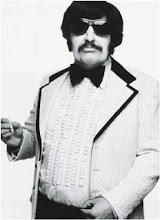So I went to a friends party the other day and he (knowing I was a gambler) wanted to show me his new craps table that he had just bought for his game room. So we went there (with other a few other guests) and he asked if we wanted to break it in. Well, always up for a game among friends, I agreed as did most of the others and we were about to start. He handed me 3 dice and said I was the banker...which puzzled me. I asked why I got the 3rd die and he said he always played 3 dice craps. I asked him to explain the rules, just to see what he was talking about and after a few minutes, I realized he was describing Cee-lo.
So, I explained a bit about Cee-lo and the differences between that and actual craps. Essentially in Cee-lo a player is established as the Banker, he puts up an initial stake known as the "Bank," or "Center Bet." Once he has placed his stake, and announced the amount, the other players have a chance to cover or "fade" his bet. Starting with the player to the Banker's left, and proceeding clockwise around the circle, each player in turn can fade a portion of the bank, as much as he likes, until the entire bank is covered or every player has had a chance to make a bet.
After all the bets are settled according to the roll of the dice, if the same player maintains control of the bank, he may add as much money as he wishes to his stake, or let the bank stand at whatever amount remains after all the bets are settled. A new round begins, the players fade again just as above, and so the game continues.
Control of the bank can change under certain circumstances. If all the players beat the Banker in one round, they break the bank, and control of the bank then passes to the next player to the Banker's left, who establishes his own initial stake as above. Otherwise, the first player to beat the banker by rolling 4-5-6 or triples will become the new Banker (after the existing Banker settles the remaining bets and pockets whatever remains of his bank).
When all the bets have been established, the Banker then rolls the dice. If he rolls 4-5-6, or "triples" (all three dice show the same number), then he instantly wins all bets. If he rolls 1-2-3 he instantly loses all bets and breaks the bank. If he rolls a pair and a singleton, then the singleton becomes his "point." E.g. a roll of 2-2-4 gives the dealer a point of "4." A point of "6" instantly wins all bets. This is called a "Two Alike Six High." In a game of multiple players, If dealer rolls a pair and an ace, dealer continues to roll until other point is reached. Some variants also allow the dealer to "push" on triple aces. Any other point stands and then players roll to try to beat the Banker's point. In a two player game, the dealer or player who rolls a "1" on the odd die is considered to have been "aced out", losing automatically. If the odd die is a "6," or "head crack", the player wins automatically. If the dice don't show any of the above combinations, then the Banker rolls again and keeps rolling until he gets an instant win, instant loss, or makes a point.
Now there are some situations when the player rolls. In the case of the Banker rolled a point of 2, 3, 4, or 5, each player then rolls the dice to settle his individual bet against the Banker. He wins with a 4-5-6, triple, or any point higher than the Banker's. He loses with a 1-2-3, or any point lower than the Banker's. If he ties the Banker's point, then it's a "push," no winner or loser, and the player pockets his stake. If he doesn't roll a meaningful combination, then he continues to roll the dice until he wins, loses, or pushes. Also, that the first player to win with a 4-5-6 or triple gets the privilege of being the next banker after all the bets of this round are settled.
Well, we all had fun that night and I won about $300. Now theres another game my friends won't play with me again.
Thanks for stopping by!
Friday, June 27, 2008
Subscribe to:
Post Comments (Atom)

No comments:
Post a Comment